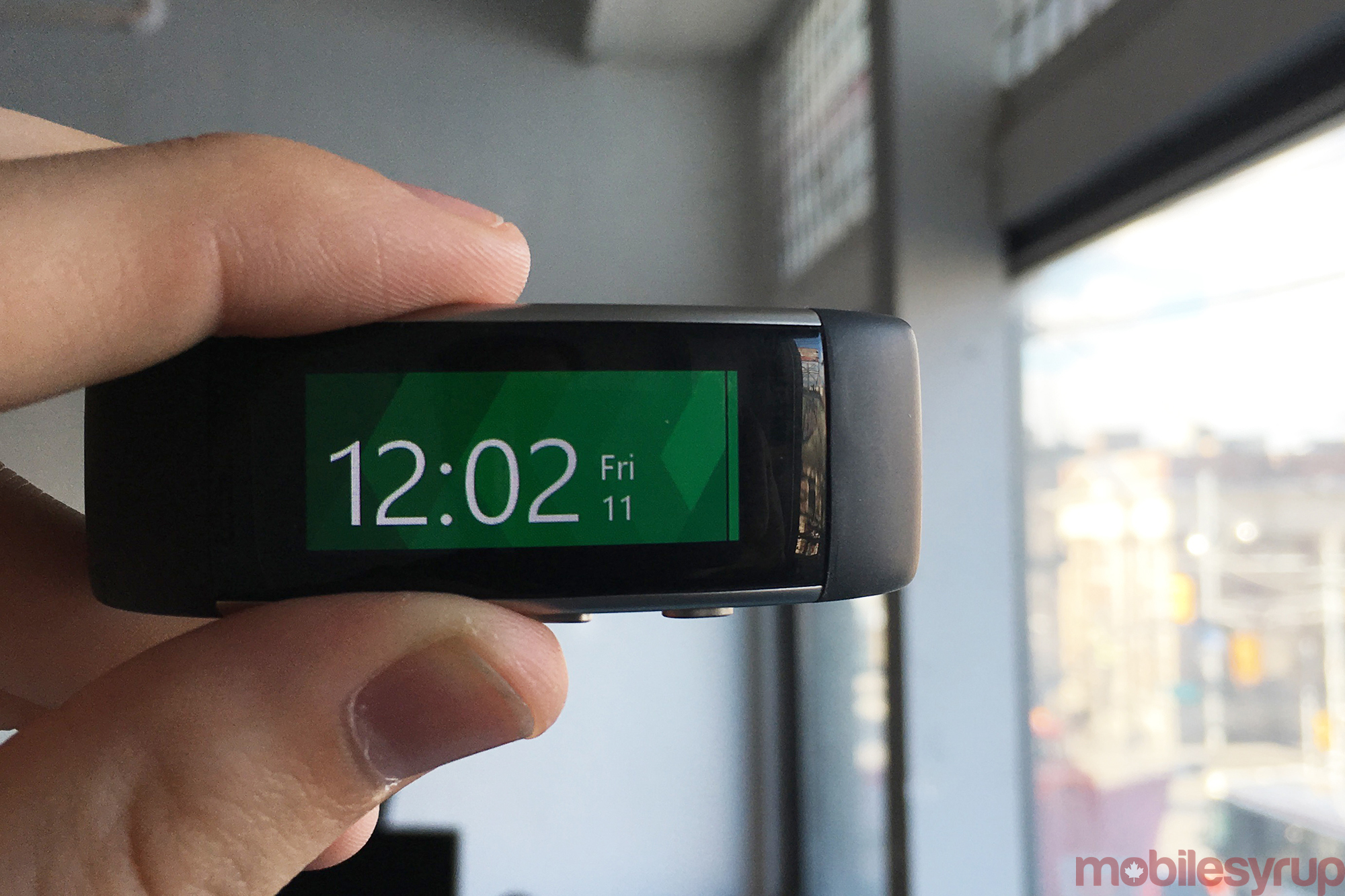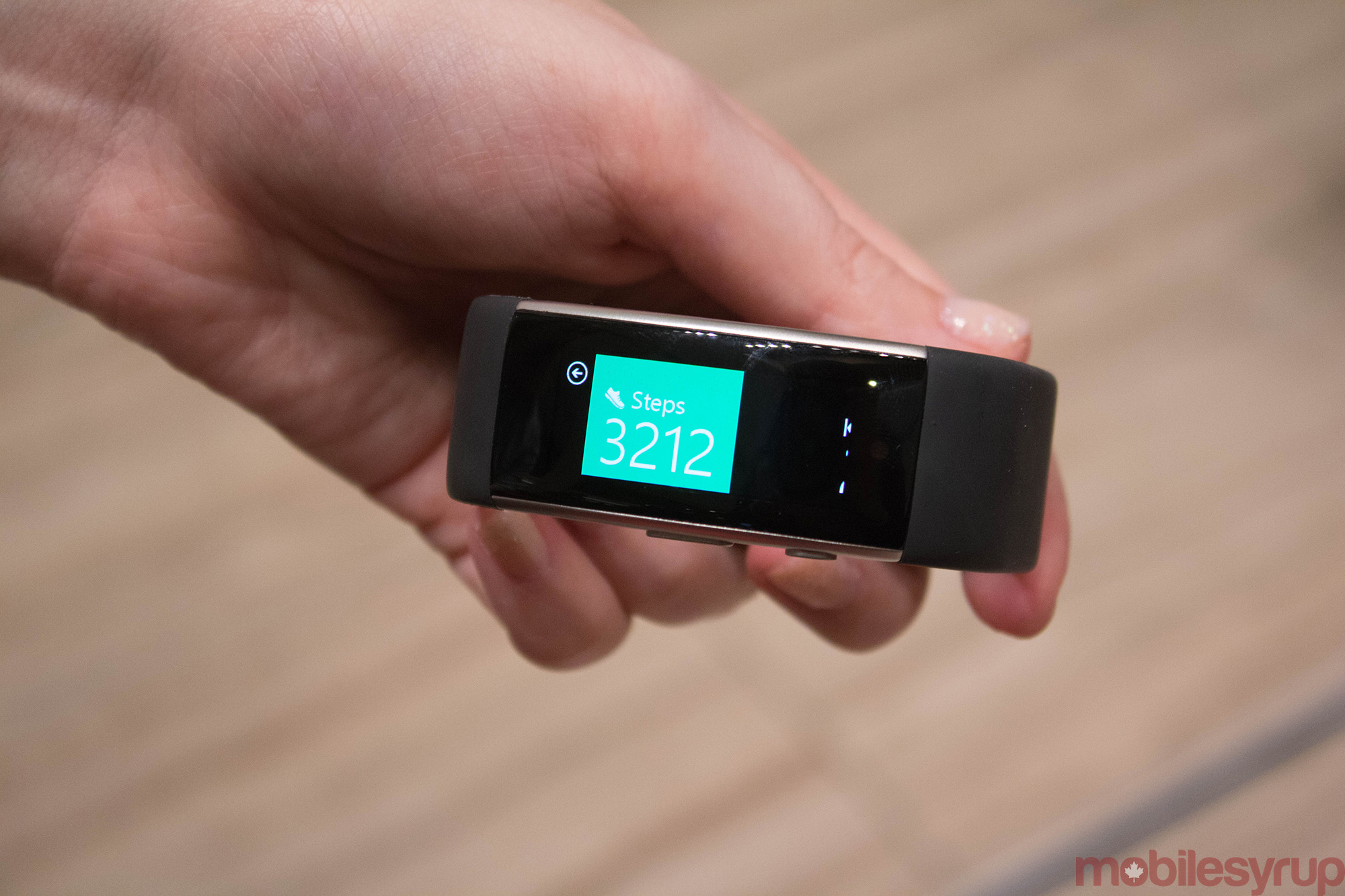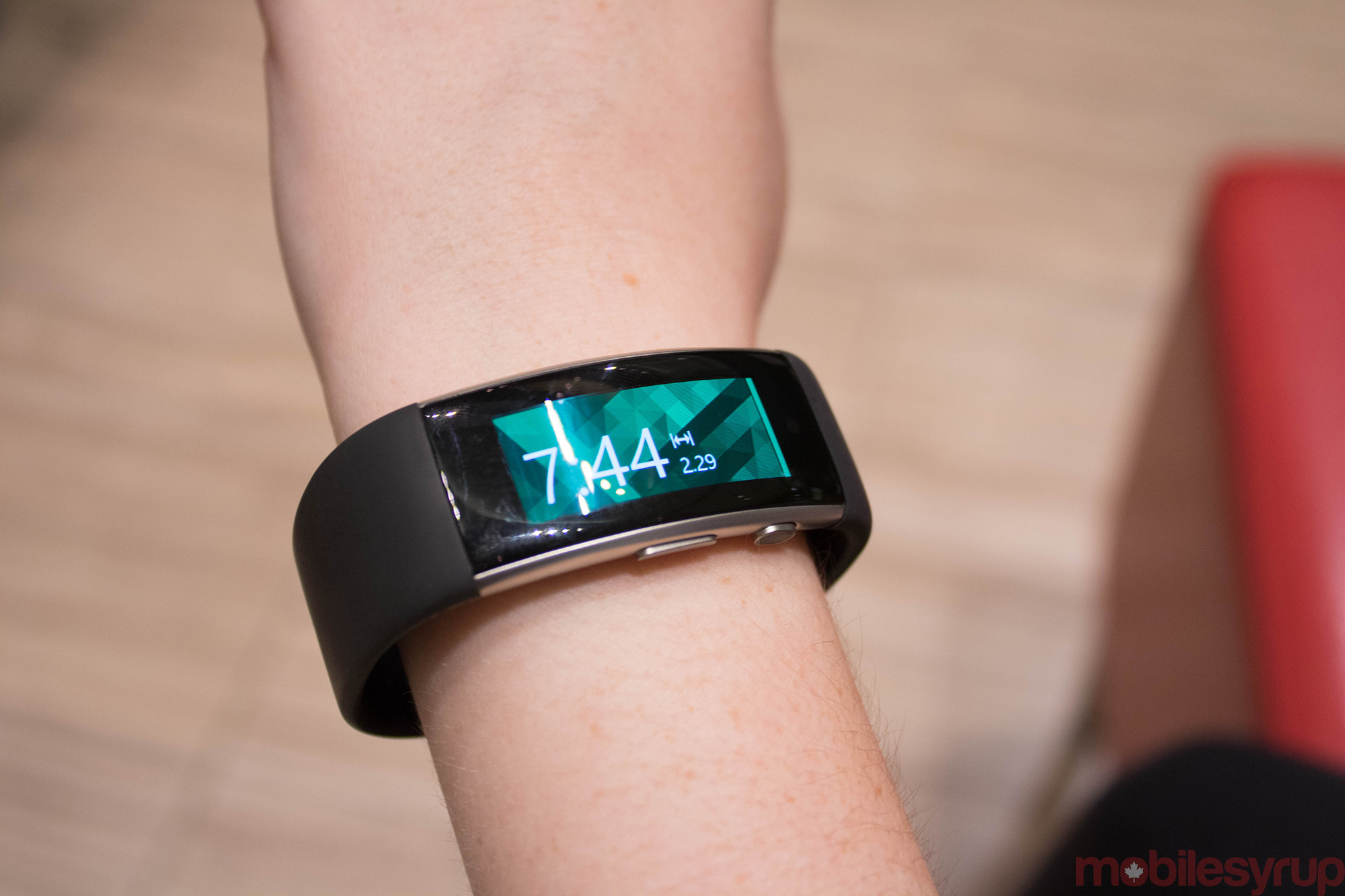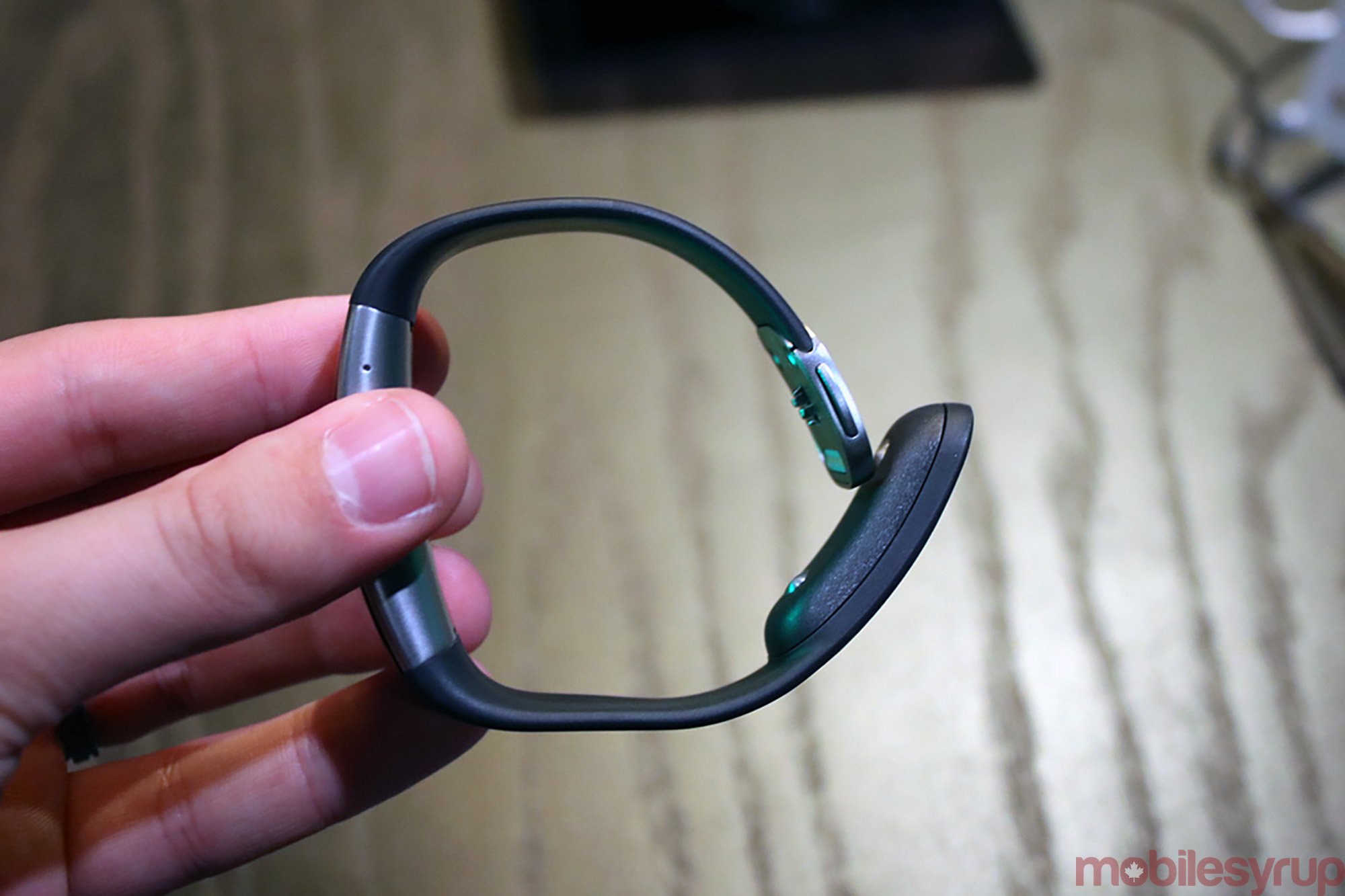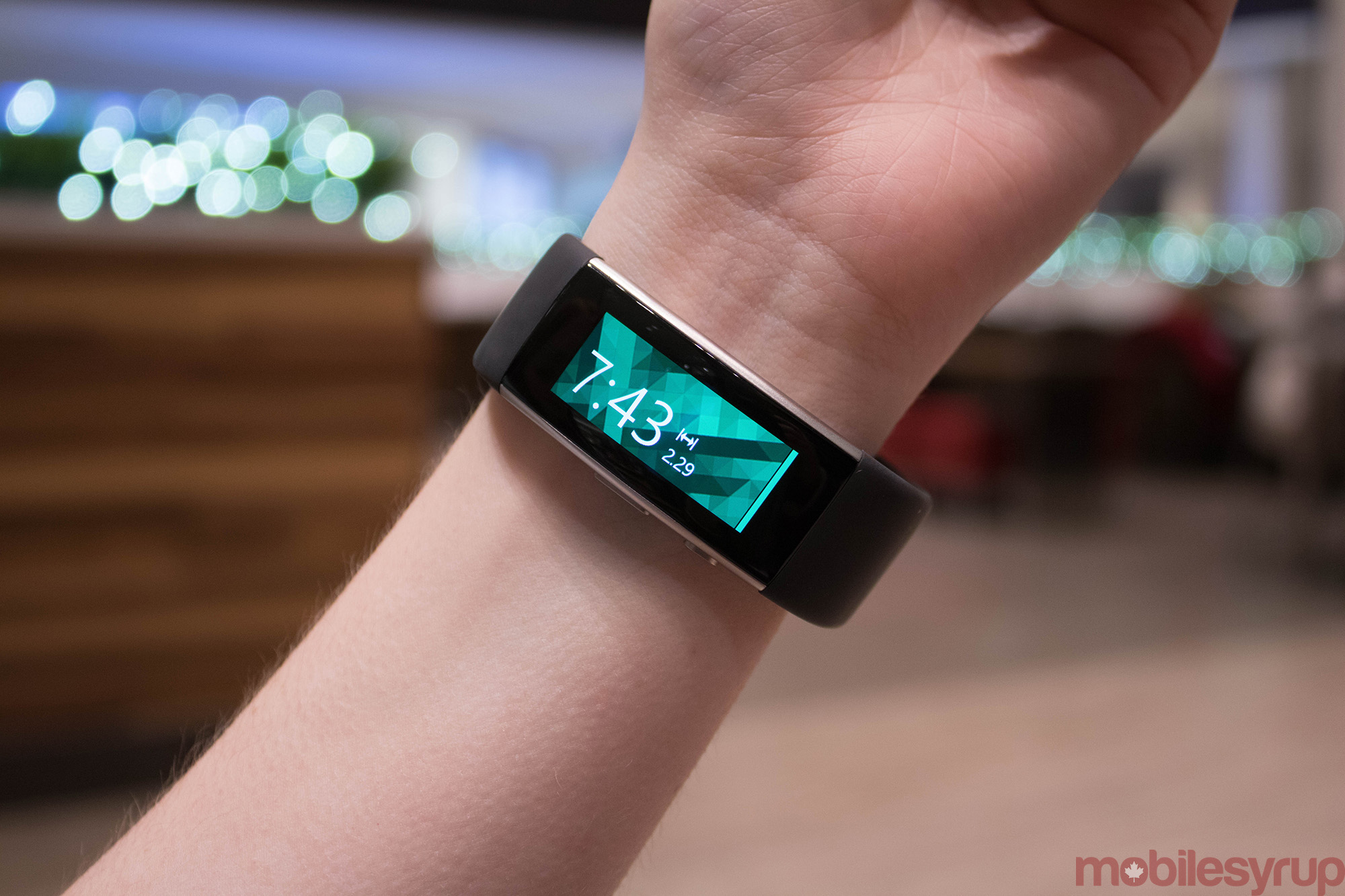
Microsoft released the original Microsoft Band in late 2014, a surprise announcement that – and this is an usual move in the modern tech industry – was leak-free prior to its big reveal.
The wearable featured a rectangular screen, included a total of 10 sensors, and was initially available only in the U.S., though it later made its way to the U.K.
A worthy upgrade over the Microsoft Band 2
Some Canadians, myself included, got their hands on an imported model and were impressed with how the device seamlessly married the key functions of both a smartwatch and a fitness band, but found the the original Band’s ergonomics weren’t quite up to the standards of competing products. Microsoft later acknowledged that the limited release was in part because it was an unabashedly first-gen offering, and that it knew it still had a lot to learn about the wearable industry.
Six month ago, Microsoft followed this device up with the Microsoft Band 2, a device that was vastly improved over its predecessor. Better ergonomics were the most striking shift, but the screen was also slightly larger, squarer, and featured a higher-resolution.
The Band 2 is a drastic improvement in ergonomics, and I find it easily matches any smartwatch or fitness band when it comes to the “wearability” factor. I have been wearing it daily for six months without any comfort complaints at all. I get nearly two days out of a charge, which is not quite as good as most fitness trackers, but better than many smartwatches. The device also charges quickly, taking just an an hour or two to reach full power.
The social challenges and leaderboards have proven to be both fun and motivating. I competed in several step challenges, one with a total of 17 participants, to see who did the most steps in a week. While I never had a better result than third place, I nonetheless changed my habits to deliberately work more steps into my daily routine, just to place better in the challenge.
This time, the new Band was released in the same regions Microsoft sells its Surface-branded products, making the Band 2 officially available to Canadians for the first-time. Microsoft upped the sensor count to 11 (Spinal Tap would be proud), including: Optical heart rate monitor, Three-axis accelerometer, grometer, GPS, microphone, ambient light sensor, galvanic skin response sensors, UV sensor, skin temperature sensor, capacitive sensor and a barometer
Many of these sensors are clearly fitness-oriented, such as the heart-rate monitor (which works by watching for the slight red flush in your skin each time your heart beats). Others, such as the microphone, allow for impressive smartwatch features, such as voice dictation via the microphone.
A laundry list of improvements
I stopped wearing a watch about 15 years ago as I always had a cell phone in my pocket to check the time. While a litany of smartwatches and fitness bands have come and gone since, none of them seemed worth purchasing between cost and the fact that I had no interest in wearing two devices. It was the merging of the two categories into one wearable that made me finally take the plunge.
The basic smartwatch functions are all here in the Band 2. Texts and emails come up on your wrists (with options to filter out things you don’t want), and you’re notified when someone is phoning you. But where the Band really distinguishes itself is in the rate at which it grows through software. We’re six months into the Band 2’s life, likely its halfway mark given the annual cycle that almost everything is on these days. In that time, the number of features Microsoft has added is impressive. The list includes:
- Social challenges and leaderboards feature on the Health app
- More tiles on your Band (the number of installed features and apps you can simultaneously support increased)
- Increased number of characters in notifications like email, SMS and Facebook (you can now often read an entire SMS without having to go to your phone)
- Run and Bike Tile Auto Pause (a must for people who don’t want to watch their average times drop while waiting for a green light or a walk signal)
- Golf Tile Tournament Mode
- Enhanced sharing of your activities (Run, Bike, Guided Workouts, Exercise, and Sleep tiles)
- Extra tiles via the Web Tile Gallery (this is an additional app stream you can install on the Band)
- GPS Power Saver mode (samples GPS during a workout rather than constantly polling)
- Activity reminders (such as get up and move around if you’ve been sitting too long)
- Music controls for Microsoft Band 2 (control the music playback on your phone via the Band)
- The ability to share custom guided workouts via email
I think that’s a pretty long list of improvements for six months, especially for a second-gen product that was already a mature offering. Some of these improvements and new features came to the Band 2 via software updates to the device itself, but others came via the accompanying Microsoft Health application.
A portion of these features were retroactively added to the original Band as well, which Microsoft still supports via frequent updates. Unlike some wearables, the Band requires you to pair it with a smartphone, and it’s the interaction of the two devices that makes it so easy for Microsoft to upgrade and extend the device’s functionality. It’s also far more convenient using Microsoft’s Health app to manage your golf tournament, or the step challenge you joined, relegating the Band to the role of collecting the raw data.
Microsoft’s multi-platform future
Microsoft is deeply multiplatform these days. Whether it’s Office, Outlook, Skype, or Minecraft, the Seattle, Washington-based company’s applications and services are all available on a wide variety of platforms. The Band continues this trend, offering up Microsoft Health apps for iOS, Android, and Windows phones. The software and features of the Band 2 are identical across all supported platforms, with one exception: Cortana functions are specific to Windows devices only. Even if you install Cortana on your iOS or Android device, the digital assistant can’t talk to the Band.
There is, however, one additional advantage to having a Band with a Windows phone. Because the Band is a partnership between the wearable and your smartphone, there are apps that can install themselves to the wearable while also running on your phone, and interacting. That interaction could be pushing content to the Band from the app on your phone. It may also be something like using your Band as a shutter button for your smartphone, allowing you to set up the shot and then be in it, using your Band to take the shot.
But the Band also supports Web Tiles, and those work no matter what platform you’re on. I’m no programmer, so I’ll rely on Microsoft’s description of how this works: “Write tile code once in simple JSON code and let the Microsoft Health app do the rest for you – adding web tiles to Microsoft Band, periodically fetching web resources and delivering them to the web tile on the Band.” Web tiles are a great way to distribute dynamic content, such as a news site pushing out headline, a weather site keeping you up to date on current conditions, and so on.
The Microsoft Band is a very different platform than most other wearables out there. From it’s multiplatform nature, to its openness, to its extensibility, to the torrid pace at which its software is evolving, to the fact that it straddles the line virtually 50/50 between being a fitness band and a smartwatch, it’s the only wearable currently on the market I’m interested in inconveniencing my wrist over.
After so much development during the first six months of its life, it’ll be interesting to see how it develops over the remainder.
MobileSyrup may earn a commission from purchases made via our links, which helps fund the journalism we provide free on our website. These links do not influence our editorial content. Support us here.

